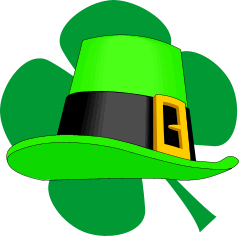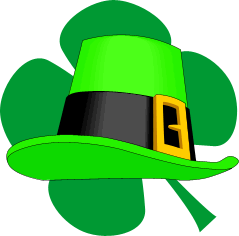

Saint Patrick’s Day (Irish: Lá ’le Pádraig or Lá Fhéile Pádraig), colloquially St. Paddy’s Day or Paddy’s Day, is always celebrated on March 17th, which is the day that Saint Patrick died. In Ireland, Saint Patrick’s Day is both a holy day and a national holiday. Saint Patrick is the patron saint of Ireland as he was the one who brought Christianity to the Irish.
Saint Patrick was born around 385 AD in the UK. His real name is believed to be Maewyn Succat. When he was 16, he was kidnapped by a group of Irish raiders and sold into slavery in Ireland. During his six-year captivity as a shepherd, he began to have religious visions and found strength in his faith. He finally escaped to France and became a priest – and later a bishop. When he was about 60 years old, Saint Patrick returned to Ireland to spread the Christian word. He used the shamrock, which resembles a three-leafed clover, as a metaphor to explain the Christian concept of God –Father, Son and Holy Spirit.
People give St. Patrick credit for chasing all the snakes out of Ireland. This is likely a metaphor for his bringing Christianity to Ireland and driving out the pagan religions.
General sign of St.Patrick’s Day is Green and Leprechauns.
Green means spring, Ireland and the shamrock while Leprechauns are Irish and usually mean mischievous Irish elf.
Saint Patrick’s Day is celebrated worldwide by Irish people and increasingly by non-Irish people (usually in Australia, North America, Ireland) as well. Celebrations are generally themed around all things Irish and, by association, the color green. Both Christians and non-Christians celebrate the secular version of the holiday by wearing green or orange, eating Irish food and/or green foods, imbibing Irish drink (such as Guinness) and attending parades.
The largest St. Patrick’s Day parade is held in New York City and it is watched by over 2 million spectators. The St. Patrick’s Day parade was first held in Boston in 1761, organized by the Charitable Irish Society. As well as being a celebration of Irish culture, Saint Patrick’s Day is a Christian festival celebrated in the Catholic Church.
Many Irish people still wear a bunch of shamrocks on their lapels or caps on this day or green, white, and orange badges (after the colours of the Irish flag). Girls and boys wear green in their hair. Artists draw shamrock designs on people’s cheeks as a cultural sign, including American tourists.
Ref: wikipedia








